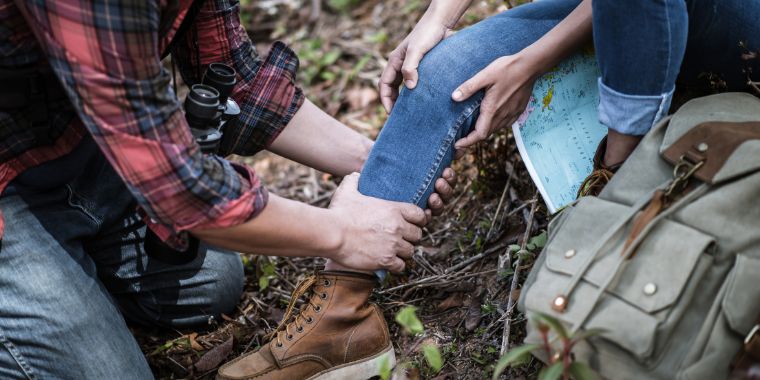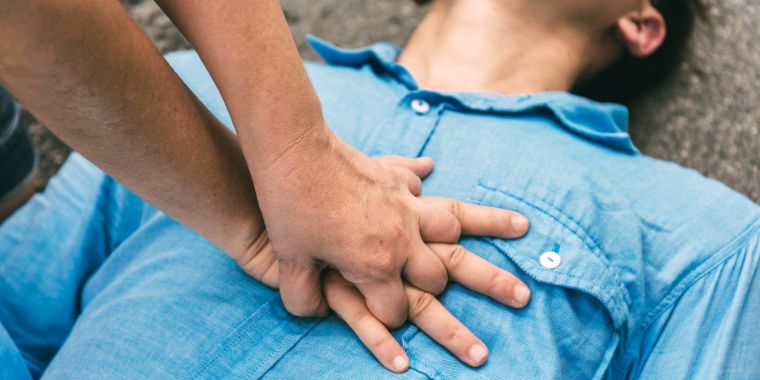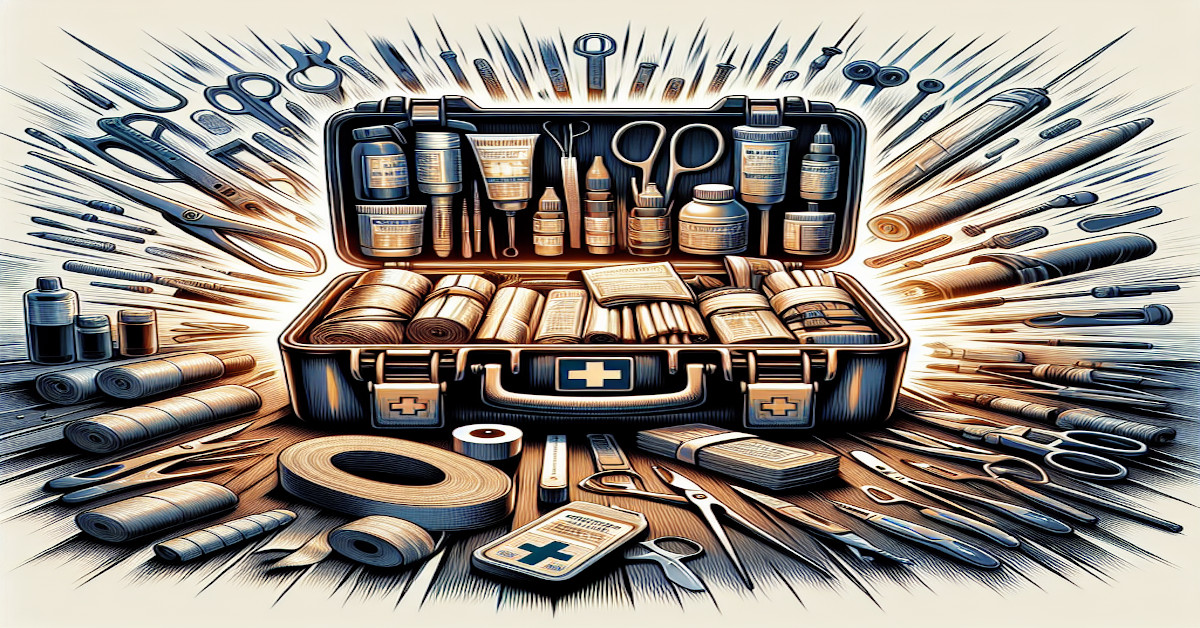In the world of survivalism, knowing basic first aid skills is essential, but taking it a step further with advanced techniques can truly be a game-changer. From treating severe wounds to handling medical emergencies in the wild, mastering advanced first aid skills can increase your chances of survival in the toughest situations. In this article, we will explore some essential advanced first aid skills that every survivalist must have in their arsenal. So, buckle up and get ready to enhance your survival skills beyond the basics!
Essential Advanced First Aid Skills for Survivalists
As a survivalist, being prepared for any situation is crucial. While basic first aid skills are important, it is equally important to go beyond the basics and delve into advanced first aid techniques. In this article, we will explore some essential advanced first aid skills that every survivalist should master. From assessment and triage to bone fracture management and CPR, these skills can potentially mean the difference between life and death in a survival situation.
Assessment and Triage
Scene Assessment
When faced with a medical emergency, the first step is to properly assess the scene. This includes evaluating the safety of the environment and identifying any potential hazards. By ensuring the safety of yourself and others, you can effectively provide care without putting yourself in harm’s way.
Primary Survey
Once the scene is deemed safe, it is crucial to perform a primary survey on the patient. This involves quickly assessing the patient’s vital signs, such as their responsiveness, airway, breathing, and circulation. Identifying any life-threatening conditions is essential in prioritizing the care given.
Secondary Survey
After completing the primary survey, a more detailed examination of the patient should be conducted. This entails obtaining a thorough medical history, performing a comprehensive physical examination, and identifying any non-life-threatening injuries or illnesses. The secondary survey helps to uncover hidden injuries or medical conditions that may require immediate attention.
Triage System
In situations where multiple casualties are present, it is crucial to utilize a triage system. The goal of triage is to prioritize patients based on the severity of their condition and allocate resources accordingly. By utilizing a systematic approach, you can effectively organize your efforts and provide assistance to those in critical need first.
Wound Care and Dressing
Cleaning and Sterilization
When dealing with wounds, proper cleaning and sterilization techniques are vital to prevent infection. Start by washing your hands thoroughly and using sterile gloves when necessary. Cleanse the wound gently with an antiseptic solution or clean water, removing any debris. It is imperative to prevent cross-contamination and maintain a sterile environment throughout the process.
Hemostasis Techniques
To control bleeding, it is essential to learn different hemostasis techniques. Direct pressure is often the first line of defense, but if bleeding persists, you may need to apply pressure to specific pressure points or utilize tourniquets. Mastering these techniques allows you to effectively manage bleeding, potentially saving lives.
Suturing and Stapling
In certain situations, wounds may require suturing or stapling. Learning proper suturing techniques, including the different suturing methods and materials, can help minimize scarring and aid in wound closure. Additionally, understanding when to utilize stapling as an alternative can be beneficial for larger wounds or areas with less tension.
Bandaging and Splinting
Properly applying bandages and splints help stabilize and protect injured areas. Familiarizing yourself with different types of bandages, such as occlusive, compression, or triangular bandages, allows you to address various types of wounds effectively. Splinting techniques are valuable for immobilizing fractures or dislocations, preventing further injury and reducing pain.
Burn Treatment
Differentiating Burn Degrees
Understanding the different degrees of burns is crucial in determining the appropriate treatment. First-degree burns involve only the outermost layer of the skin and can often be treated with cold water and burn ointments. Second-degree burns affect deeper layers of the skin and may require additional interventions, such as dressing changes and pain management. Third-degree burns are the most severe, requiring immediate medical attention.
Cooling Techniques
For minor burns, cooling the affected area with cold water can provide immediate relief and minimize damage. However, it is important to note that for larger or more severe burns, cooling the burn site can lead to hypothermia. Knowing when and how to implement cooling techniques is key to managing burns effectively.
Dressing and Medications
Once a burn has been properly cooled, it is crucial to apply appropriate dressings and medications. Burns can be prone to infection and may require specialized dressings, such as hydrogel or antimicrobial dressings. Additionally, pain management through over-the-counter pain relievers or prescribed medications can aid in the healing process and alleviate discomfort.

Bone Fracture Management
Splinting and Immobilization
In the event of a bone fracture, knowing how to properly splint and immobilize the affected area is essential. By stabilizing the fracture, you can prevent further damage and alleviate pain. Understanding different splinting techniques, ranging from improvised splints to commercially available options, allows for quick and effective management of fractures.
Reduction Techniques
In more severe cases, fractures may require reduction, which involves realigning the bones into their proper position. This technique should only be performed by trained professionals or under their guidance. However, having a basic understanding of reduction techniques can be beneficial in emergency situations before proper medical help arrives.
Complication Identification
While managing fractures, it is important to be aware of potential complications that may arise. Complications can include compartment syndrome, nerve or vessel injuries, or bone infections. Being alert to signs and symptoms of these complications enables early intervention and improved patient outcomes.
Dislocation and Joint Injury
Splinting and Immobilization
Similar to fractures, dislocations and joint injuries require proper splinting and immobilization. By stabilizing the affected joint, you can reduce pain and prevent further damage. Utilizing techniques such as slings, splints, or wraps can effectively immobilize the area until medical help is obtained.
Reduction Techniques
In some cases, dislocations may require reduction to place the joint back into its correct position. This procedure should only be attempted by trained professionals, as improper reduction techniques can lead to further injury or complications. However, having a basic understanding of the process can assist in providing initial support until proper medical assistance is available.
Rehabilitation and Strengthening
Once a joint or dislocation injury has been treated and immobilized, rehabilitation and strengthening exercises play a vital role in recovery. By following proper rehabilitation protocols, you can regain strength, improve range of motion, and prevent future injuries. Learning and implementing these exercises can help facilitate a full recovery.
Head and Spinal Injuries
Recognition and Stabilization
Head and spinal injuries can be life-threatening and require immediate recognition and stabilization. Knowing the signs and symptoms of a head or spinal injury, such as altered consciousness, severe headache, or loss of sensation, allows you to provide appropriate care and prevent further damage.
Airway Management
In severe head or spinal injuries, maintaining a patent airway is crucial. Understanding the different airway management techniques, such as jaw thrust or modified chin lift, helps ensure the patient can breathe properly. Additionally, protecting the cervical spine during airway management is of utmost importance to prevent exacerbating any potential spinal injury.
Transportation and Avoidance of Further Injury
Transporting a patient with a head or spinal injury safely is a crucial aspect of care. Utilizing proper techniques, such as spine boards or cervical collars, aids in minimizing movement and reducing the risk of further injury. Additionally, ensuring a smooth and controlled transfer to medical facilities plays a critical role in the patient’s overall outcome.

Cardiopulmonary Resuscitation (CPR)
CPR Techniques
Cardiopulmonary resuscitation, or CPR, is a life-saving technique that can help sustain vital functions until proper medical care is available. Learning and understanding the proper techniques of CPR, including chest compressions and rescue breaths, is essential for maintaining circulation and oxygenation in a cardiac arrest situation.
Automated External Defibrillator (AED)
When a cardiac arrest occurs, utilizing an automated external defibrillator (AED) can significantly increase the chances of survival. Understanding how to operate an AED and following the prompts provided can help restore the heart’s rhythm effectively. Learning how to synchronize CPR efforts with the AED enhances the overall effectiveness of resuscitation efforts.
Anaphylaxis Management
Identifying Anaphylactic Reactions
Anaphylaxis is a severe allergic reaction that can be life-threatening. Being able to identify the signs and symptoms, such as difficulty breathing, swelling, or severe rashes, allows for prompt intervention. Recognizing anaphylactic reactions early on enables the administration of life-saving treatments.
EpiPen Administration
Epinephrine is the primary medication used to treat anaphylaxis. Understanding how to correctly administer an EpiPen is vital in delivering the necessary medication quickly and effectively. Familiarizing yourself with dosages, injection sites, and proper disposal techniques ensures proper care during an anaphylactic emergency.
Airway Management and Breathing Support
In severe cases of anaphylaxis, airway management and breathing support may be required. Utilizing techniques such as the recovery position or manual airway opening can help maintain a patent airway until medical professionals arrive. Ensuring adequate ventilation and oxygenation is crucial for the patient’s survival.
Poisoning and Toxic Exposure
Identifying Different Types of Poisoning
Poisoning can occur in a variety of ways, ranging from ingesting harmful substances to exposure to toxic gases. Being able to identify the signs and symptoms of different types of poisoning allows for timely intervention. Whether it’s identifying the effects of ingested chemicals or recognizing symptoms of carbon monoxide poisoning, quick action is essential in mitigating the risks associated with poisoning.
Decontamination Procedures
When dealing with poisoning or toxic exposure, proper decontamination procedures are vital to prevent further absorption or spread of toxins. This can involve removing contaminated clothing, flushing toxins from the skin or eyes with water, or using specialized decontamination solutions. Understanding and implementing these procedures effectively reduces the risk of complications.
Antidotes and Symptomatic Treatment
In some cases, specific antidotes or symptomatic treatments may be necessary to counteract the effects of poisoning. Learning about antidotes and their administration, as well as common symptomatic treatments, equips you with the knowledge and skills needed to provide appropriate care. Prompt intervention can greatly increase the chances of a positive outcome for the patient.
In conclusion, as a survivalist, it is essential to go beyond basic first aid skills and master advanced techniques. From assessing and triaging a scene to managing bone fractures and performing CPR, these skills are crucial in emergency situations. By understanding and developing these essential advanced first aid skills, you can enhance your ability to provide effective care in survival scenarios. Remember, preparation is key, and investing time and effort in acquiring these skills can save lives when it matters most.
[the_ad_group id=”864″]
[the_ad_group id=”863″]
[the_ad_group id=”865″]

